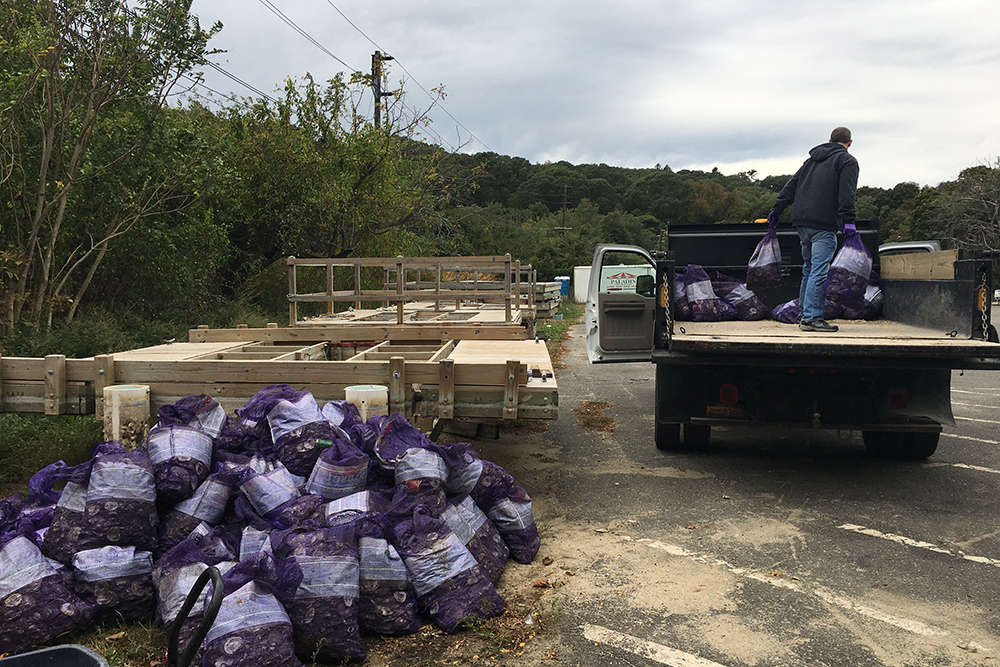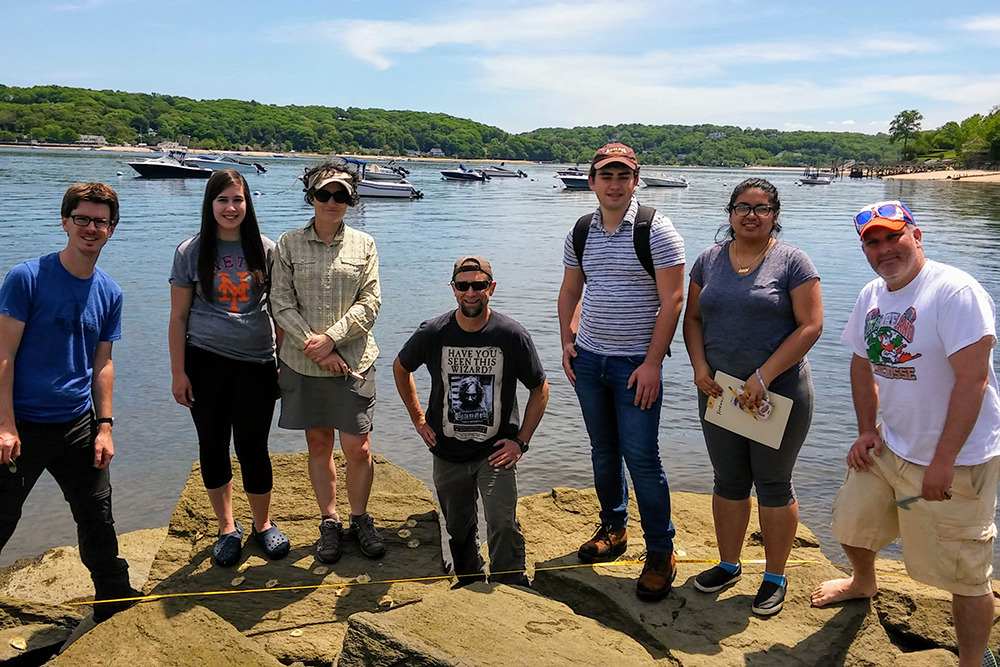Laura Fallon doesn’t like seafood. But that hasn’t stopped the 24-year-old Adelphi graduate student from joining forces with a biology professor to help bring back the Long Island oyster.
At one time, the oyster was so plentiful in New York City that oyster pie was a popular street food. But pollution destroyed oyster habitats, all but wiping them out up and down the East Coast.
Fallon, who grew up in upstate New York, has always had a passion for the sea. Now studying biology, she’s working with Associate Professor Aaren Freeman, Ph.D., to bring back oyster breeding grounds off Long Island. She is spending this summer investigating potential sites for new oyster reefs, which is also the subject of her master’s thesis.
“I’ve always been interested in marine biology and restoration, so I’m really excited about this,” she said.
Dr. Freeman, a marine ecologist and the graduate coordinator of Adelphi’s environmental studies program, is co-founder of a group called Community Oyster Restoration Effort (CORE). He launched the group 18 months ago with Ruth Coffey, Ph.D., a visiting assistant professor of environmental studies, along with members from the Town of Hempstead and Long Beach High School.
“This effort with CORE is a realization that there are a lot of things I can do in my own backyard that are conservation orientated,” he said.
For thousands of years, oysters thrived along the East Coast. In some areas, historic piles of discarded oyster shells—called middens—rose to 30 feet. Shells were so plentiful in Long Island’s early days they were crushed and used to pave roads.

But the Industrial Revolution was not kind to mollusks. Pollution in the estuaries around populated areas led to bacterial growth and loss of oxygen in the water, which killed off much of the aquatic life. The Billion Oyster Project in New York City estimates that there were once 200,000 acres of oyster breeding grounds in the area. Today, Dr. Freeman says less than 1 percent remain.
That’s where CORE comes in. It seeks to recycle oyster shells from restaurants and oyster festivals, using them to create the base for future reefs. Oysters begin life floating on currents, but soon metamorphose from larvae to adults, growing a shell and settling on a hard surface.
For that, oysters prefer the shells of other oysters. Experts believe these fake reefs, created by shells held together by nets or metal cages, will attract live oysters and eventually become a sustainable community.
Today, water quality is vastly improved from a few decades ago, making oyster habitats viable again. In Nassau County, Hempstead’s town government was the first to sign on to CORE’s shell-saving efforts, but efforts are also underway to encourage coastal property owners to install their own reefs.
At Adelphi this past year, the school held weekend volunteer days, where students bagged recycled oyster shells for future reef creation.
At a project in Nassau County sponsored by Long Beach High School, reefs were installed in an estuary on school property. Fallon is investigating that site, along with other estuaries in Glen Cove, Cold Spring Harbor, Bayville, Jamaica Bay and the appropriately named Oyster Bay. She’s using collectors to find spat—young oysters—that are drifting by, to determine the best placements for the reefs.
“I try to choose inside the main bays of Long Island,” said Fallon, who is also a teaching assistant in Dr. Freeman’s classes. “We’re looking for places with currents, where oysters used to be plentiful.”



